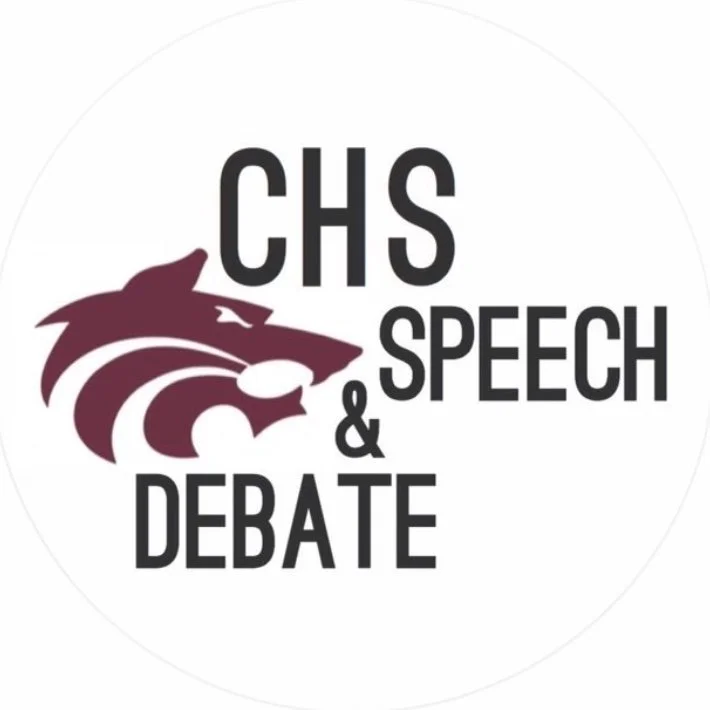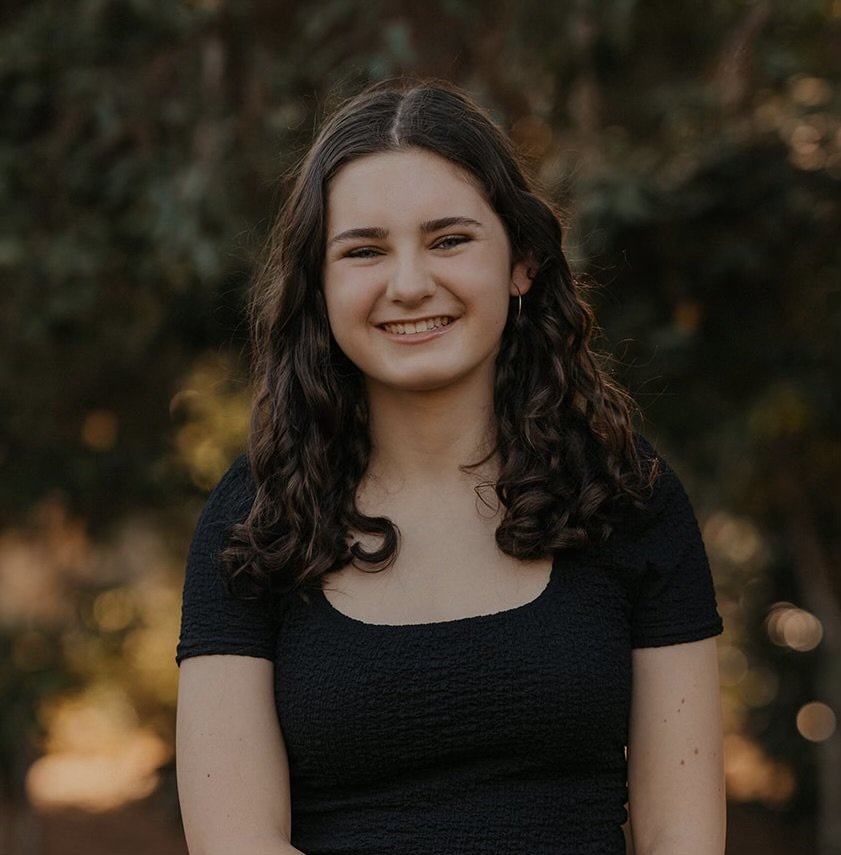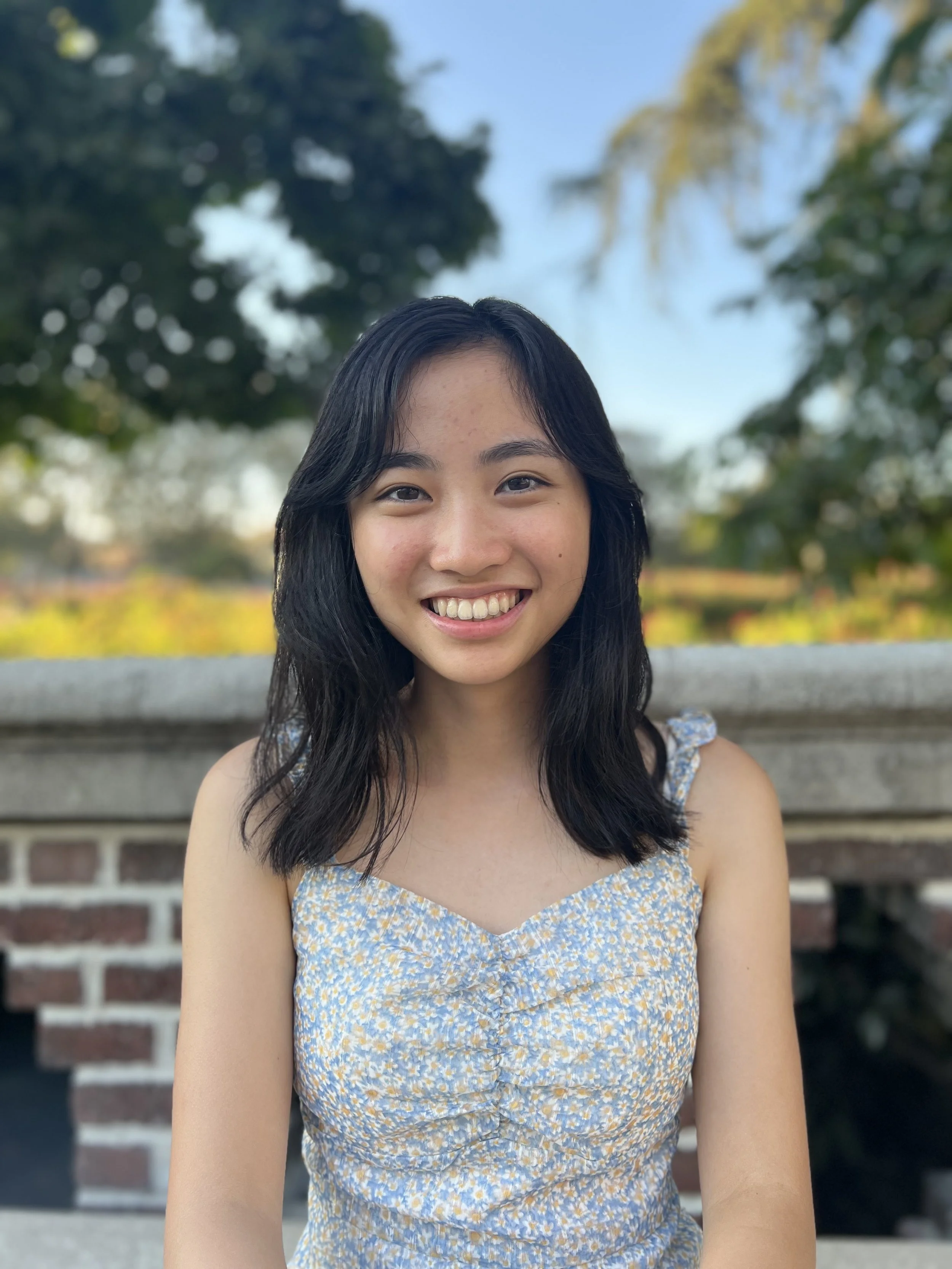Who We Are
Claremont High School’s Speech and Debate Team is part of the Citrus Belt Speech Region League (CBSR). Our league includes Riverside County, San Bernardino County, and those areas of Los Angeles County within the physical boundaries of the Bonita, Claremont, and Pomona School Districts. CBSR is our league under the California High School Speech Association which is the state organization governing high school speech and debate. On the national level, as part of the National Speech and Debate Association, we are part of the Southern California District.
Dave Chamberlain started teaching at Claremont High in 2000. His first class was World Literature filled with eager sophomores waiting with bated breath to see where in the world we were going to read. The same year, the advisor and coach for Claremont High School’s Speech and Debate team abruptly resigned and left. The team was about to quickly disband, however the plucky group of sophomores wanted to continue to compete. Knowing that there was a qualified new English teacher, the sophomores rallied around Mr. Chamberlain to save the team. He agreed! Little did CHS and the team know, this was going to be the start of a total makeover of the team.
Within his first year of coaching, Mr. Chamberlain already qualified the great late Ohad ‘Ady’ Barkan, a political activist, to Nationals in Oklahoma City, in the Congressional Debate. The next year, he sent his first speech team to Nationals in Atlanta. The speech and debate team would quickly pick up more and more awards and accolades. Due to Mr Chamberlain’s leadership and coaching, CHS has qualified someone to Nationals almost every year since he first took over in 2000. Since then, the team has won numerous League Championships (current reigning), district championships (current reigning), as well as sweeping many national invitationals, such as the Jack Howe Invitational, La Costa Canyon Winter Classic, and John Lewis Invitational just to name a few.
Meet the Coaches
Student Leadership
Events Offered
-
Policy Debate is a two-on-two debate where an affirmative team proposes a plan and the negative team argues why that plan should not be adopted. The topic for Policy Debate changes annually, so debaters throughout the course of the year will debate the same topic. One member of each team will perform the ‘first’ speeches, the other the ‘second’ speeches. So the person who reads the 1AC wil also perform the 1AR, for example. Note that the debate begins with the affirmative speaking first, and then switches midway through the debate where the negative speaks first, thus giving the affirmative the ability to speak last.
(NSDA)
-
Congressional Debate is like a simulation of the real United States legislature. A group of 10-25 students, called a Chamber, will compete in a legislative session. A series of bills and resolutions will be proposed by students from various schools. Students in turn will be selected by a presiding officer — a student elected to conduct the business of the round — to give speeches both advocating for and encouraging the defeat of the measure in front of them. Following each speech, competitors will be able to pose questions of the speaker. Once debate is exhausted on a particular item, the chamber will vote either to pass or fail the legislation, and debate moves on to the next item. Legislation comes in two types — a bill and a resolution. A bill is a plan of action, detailing how a particular policy proposal will be implemented. A resolution, meanwhile, is a statement expressing the opinion of the chamber. Typically, one session of Congress lasts about 2-3 hours. During that time, students typically give speeches 3 minutes in length. The first two speeches on a piece of legislation are known as the first advocacy, or first pro, and the first rejection, or first con. These speeches are followed by 2 minutes of cross examination. After the first pro and con speech are established, each additional speaker is subject to one minute of cross examination by the chamber.
(NSDA)
-
Lincoln-Douglas Debate typically appeals to individuals who like to debate, but prefer a one-on-one format as opposed to a team or group setting. Additionally, individuals who enjoy LD like exploring questions of how society ought to be. Many people refer to LD Debate as a “values” debate, as questions of morality and justice are commonly examined. Students prepare cases and then engage in an exchange of cross-examinations and rebuttals in an attempt to convince a judge that they are the better debater in the round.
(NSDA) -
As a team event, students who compete in Public Forum need to be able to work well with a partner. Balanced teams, both in terms of preparation before debates and contributions within a debate, helps provide a competitive advantage during tournaments. PF looks at current event topics. Students who do Public Forum must be prepared to debate in front of judges without any formal debate training. Being able to persuade a range of judges is a central component to this event. Additionally, PF is focused upon debating varying resolutions that change frequently, which exposes students to a variety of topics during a singular competitive season.
(NSDA) -
World Schools Debate is a three-on-three format. While a given team may consist of five members, only three students from a team participate in a given debate. Resolutions come in two types: prepared motions and impromptu motions. Teams will be assigned one of two sides in each round- either the government team proposing the motion or the opposition team advocating the rejection of the motion. Debaters present their position on a topic, refute their opponents, and respond to questions throughout the course of the debate.
(NSDA)
-
Big Questions Debate is a debate format that allows students to debate with a partner or as an individual. Debates may be one-on-one, two-on-two, or two-on-one. Topics last all year and concern the intersection of science, philosophy, and religion. Students are assigned a side of the topic before each round and present cases, engage in rebuttal and refutation, and participate in a question period. Big Questions is supported by the John Templeton Foundation.
(NSDA) -
Impromptu is a public speaking event where students have seven minutes to select a topic, brainstorm their ideas, outline and deliver a speech. The speech is given without notes and uses an introduction, body, and conclusion. The speech can be light-hearted or serious. It can be based upon prompts that range from nursery rhymes, current events, celebrities, organizations, and more.An adapted version of Impromptu, Prepared Prompt Speaking, has been used at online tournaments. In Prepared Prompt, students will be given a list of topics prior to the tournament, select one prompt from the official list, prepare a speech, and submit it through the recording process.
Impromptu is a public speaking event that tests a student’s ability to analyze a prompt, process their thoughts, organize the points of the speech, and deliver them in a clear, coherent manner. Students’ logic is extremely important. They must be able to take an abstract idea, such as a fortune from a fortune cookie, and put together a speech that has a thesis and supporting information.
(NSDA)
-
Declamation is a public speaking event where students deliver a portion or portions of a speech previously delivered. The speech the student delivers can be any publicly delivered speech. Commencement addresses, historical speeches, political speeches, and celebrity speeches are common examples that students may use to select their declamation. Speeches are up to 10 minutes in length. As a result, students typically shorten the text of the speech to meet time requirements. The goal of a declamation is to convey a message with clarity, emotion, and persuasiveness. The event is not designed for students to mimic the original author of the speech. Instead, speakers are to develop an oration that delivers the message of the author in an original and engaging manner.
(NSDA) -
Informative is a speech written by the student with the intent to inform the audience on a topic of significance. Students in informative may use a visual aid. Informative gives students the unique opportunity to showcase their personality while educating the audience. An Informative is not simply an essay about the topic—it is a well researched and organized presentation with evidence, logic, and sometimes humor to convey a message. Topics are varied and interesting. Whether it be a new technological advance the audience is unaware of or a new take on a concept that everyone is familiar with, Informative is the students opportunity to teach the audience. Types of topics and structure vary greatly.
(NSDA) -
International Extemporaneous Speaking, typically called International Extemp, is a speech on current International events with limited preparation time. A student’s understanding of important political, economic, and cultural issues is assessed along with critical thinking and analytical skills. Students report to a draw room (often referred to as Extemp prep) where all of the Extempers gather at tables, set out their files, and await their turn to draw topics. Students may access research brought with them to the tournament during the 30-minute preparation period. Some tournaments, including the NSDA National Tournament, will permit students to use the internet to research during preparation time. When prep time is up, the student reports to the competition room to deliver a 7 minute speech. Students have a lot to do in 30 minutes—they must select a question, review research, outline arguments with supporting materials, and practice at least part of the speech before time expires. Many tournaments prohibit the consultation of notes during the speech in which case speech structure and evidence need to be memorized during prep time as well.
(NSDA) -
Original Oratory is a speech written by the student with the intent to inform or persuade the audience on a topic of significance. Oratory gives students the unique opportunity to showcase their voice and passion for their topic. An Oratory is not simply an essay about the topic—it is a well researched and organized presentation with evidence, logic, emotional appeals, and sometimes humor to convey a message. Topics may be of a value orientation and affect people at a personal level, such as avoiding peer pressure, or they can be more of a policy orientation and ask an audience to enact particular policies or solve societal problems.
(NSDA)
-
United States Extemporaneous Speaking, typically called US Extemp, is a speech on current events in the United States with limited preparation time. A student’s understanding of important political, economic, and cultural issues is assessed along with critical thinking and analytical skills. Students report to a draw room (often referred to as Extemp prep) where all of the Extempers gather at tables, set out their files, and await their turn to draw topics. Students may access research brought with them to the tournament during the 30-minute preparation period. Some tournaments, including the NSDA National Tournament, will permit students to use the internet to research during preparation time. When prep time is up, the student reports to the competition room to deliver a 7 minute speech. Students have a lot to do in 30 minutes—they must select a question, review research, outline arguments with supporting materials, and practice at least part of the speech before time expires. Many tournaments prohibit the consultation of notes during the speech in which case speech structure and evidence need to be memorized during prep time as well.
(NSDA) -
Dramatic Interpretation, contrary to its name, is not all about drama. While dramatic elements are key aspects of the event, melodramatic, or overly-sad selections are not ideal choices for performance. DI lacks props, costuming, sets, and other luxuries seen in various forms of performance art. There is a set time limit of ten minutes, with a thirty second grace period. Students who choose to compete in Dramatic Interpretation should focus on suspending the disbelief of the audience by portraying a realistic, emotional journey of a character(s). The performance should connect to the audience. Students who do Dramatic Interpretation may perform selections on topics of serious social subject matter such as coping with terminal illness; significant historical situations, events, and figures; as well as racial and gender discrimination, suppression, and oppression. Students should select pieces that are appropriate for them. Considerations for selecting a DI topic should include the student’s age, maturity, and school standards.
(NSDA)
-
Humorous Interpretation, as its name indicates, is humorous. Competitors often use multi-character selections to tell relatable stories using humor as a device to connect with the audience. Think about your favorite comedian’s latest stand up routine, or something funny that recently happened. Ask yourself why it’s funny. Then ask yourself if that joke would be funny to, say, your mom, or great-great Uncle Joe. Humor is a complex human quirk. Each individual’s sense of humor is unique. However, other aspects of humor are more universal in nature. So, when choosing an HI, it is imperative to consider not only the humorous elements of the selection, but also to keep in mind how the story itself will appeal to the audience. Not everyone will laugh at the same joke, but if a character’s plight is relatable, the audience will identify with him or her.
(NSDA)
This is not an exhaustive list of all events covered, for more info and examples, check this page


















